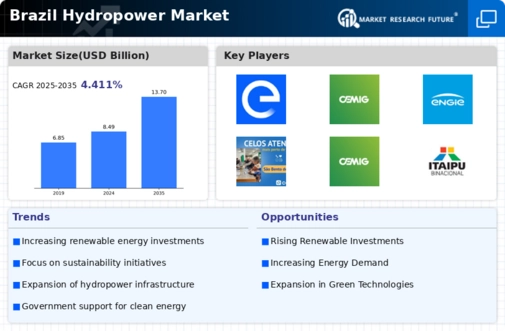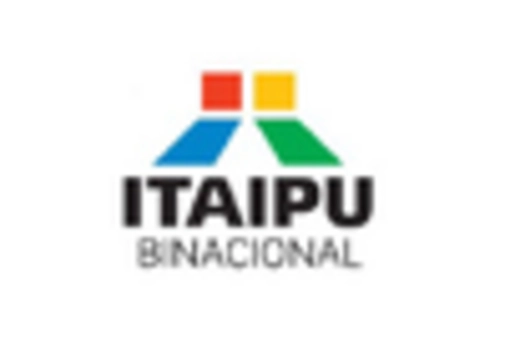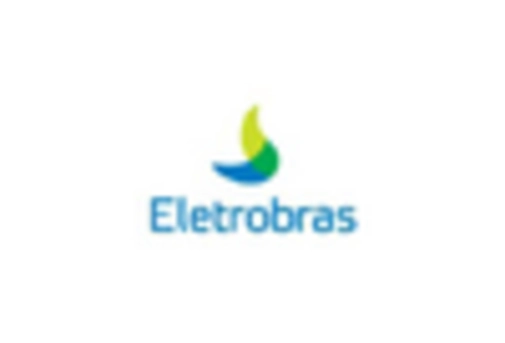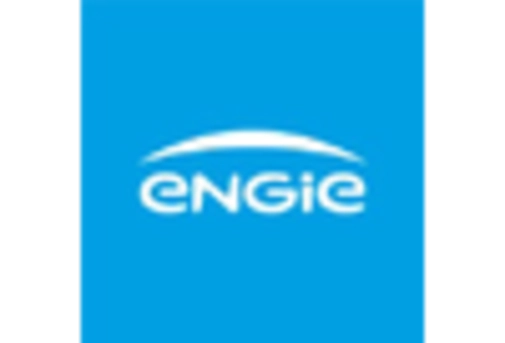The hydropower market in Brazil is characterized by a competitive landscape that is increasingly shaped by sustainability initiatives and technological advancements. Key players such as China Three Gorges Corporation (CN), Enel Green Power (IT), and Statkraft (NO) are actively pursuing strategies that emphasize innovation and regional expansion. China Three Gorges Corporation (CN) has positioned itself as a leader in large-scale hydropower projects, focusing on enhancing operational efficiency through advanced technologies. Enel Green Power (IT) is leveraging its expertise in renewable energy to expand its portfolio, while Statkraft (NO) is concentrating on diversifying its energy mix to include more sustainable sources, thereby influencing the overall competitive dynamics in the market.
The business tactics employed by these companies reflect a trend towards localization and supply chain optimization. The market appears moderately fragmented, with several players vying for market share. However, the collective influence of major companies is significant, as they drive innovation and set benchmarks for operational excellence. This competitive structure fosters an environment where collaboration and strategic partnerships are essential for growth and sustainability.
In August 2025, Enel Green Power (IT) announced the commissioning of a new hydropower plant in the Amazon region, which is expected to generate approximately 1,200 GWh annually. This strategic move not only enhances the company's renewable energy capacity but also aligns with Brazil's commitment to increasing its clean energy output. The project underscores Enel's focus on expanding its footprint in emerging markets, thereby reinforcing its competitive position.
In September 2025, Statkraft (NO) entered into a partnership with local Brazilian firms to develop a series of small-scale hydropower projects. This collaboration aims to tap into the untapped potential of Brazil's river systems, which could lead to a significant increase in renewable energy generation. The partnership reflects Statkraft's strategy to localize its operations and engage with regional stakeholders, which is likely to enhance its market presence and operational efficiency.
In October 2025, China Three Gorges Corporation (CN) secured financing for a major hydropower project in Brazil, which is projected to have a capacity of 2,000 MW. This development is indicative of the company's commitment to investing in Brazil's energy infrastructure, potentially positioning it as a key player in the country's energy transition. The project is expected to contribute significantly to Brazil's renewable energy targets, thereby solidifying China Three Gorges' strategic importance in the region.
As of November 2025, the hydropower market is witnessing trends that emphasize digitalization, sustainability, and the integration of artificial intelligence in operations. Strategic alliances are becoming increasingly vital, as companies seek to enhance their competitive edge through collaborative efforts. The shift from price-based competition to a focus on innovation, technology, and supply chain reliability is evident, suggesting that future differentiation will hinge on these factors. Companies that can effectively leverage these trends are likely to emerge as leaders in the evolving landscape.


















Leave a Comment